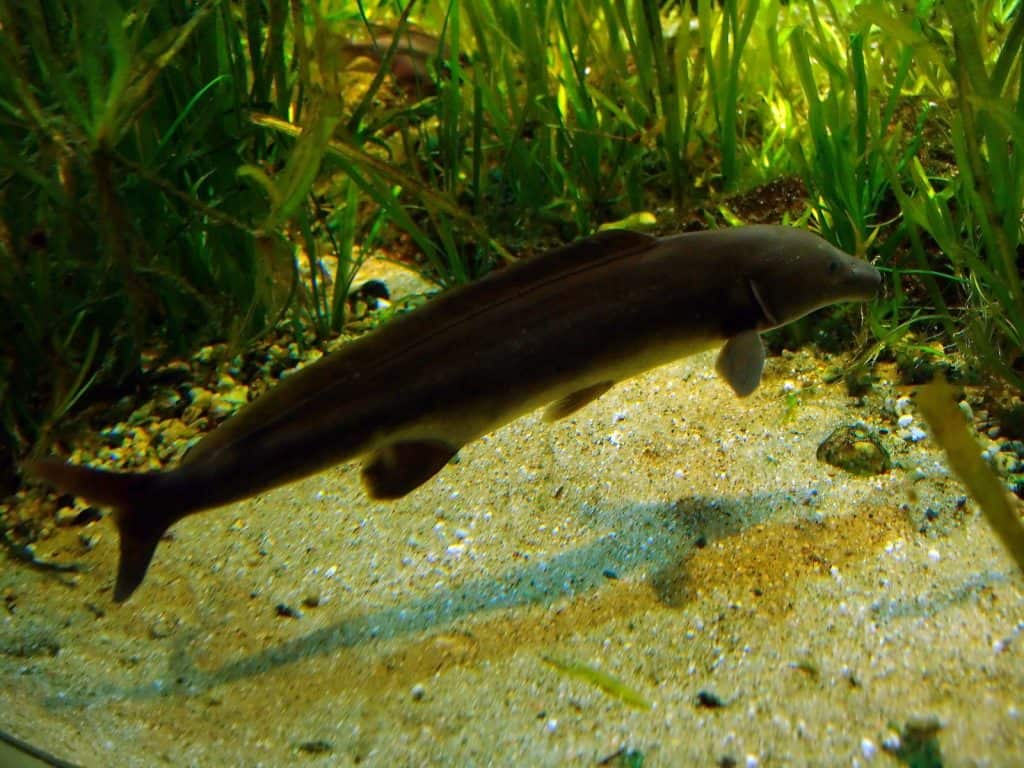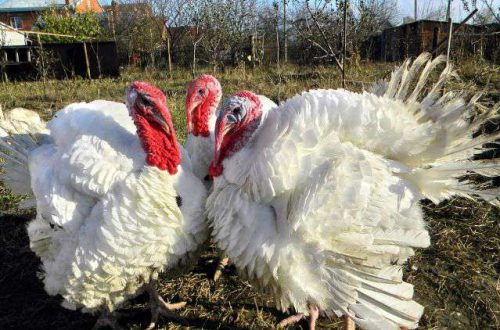
Dolphin aquarium fish: description, maintenance and cultivation
The blue dolphin is often grown in aquariums. This fish has gained popularity due to its interesting appearance and accommodating character. For the first time, information about such an aquarium dolphin appeared in 1902, and after half a century the subspecies was distributed in Europe.
Contents
Features of aquarium dolphins
The homeland of the blue dolphin is Africa, namely Lake Malawi. Individuals 25 cm in size are found here. Aquarium fish grow on average up to 10–20 cm. It is known that their size is influenced by the dimensions of the aquarium.
This variety of cichlids was called “dolphin” because of the resemblance to it. The fry are almost dissimilar, but gradually on the forehead of the fish is formed small fat padwhich makes it look like a dolphin.
In general, this is an attractive creation. Him gray-blue body with a silvery sheen, and on the sides you can see stripes and a couple of dark spots. In adult fish, the shade is lighter, and the mentioned spots often disappear. Shortly before mating games, the body of the male becomes dark blue. Several new stripes appear here, and the forehead acquires a yellow tint.
At the blue dolphins large head and movable eyes. The dorsal fin starts near the head and ends at the base of the tail. The fins located on the abdomen and chest are painfully short, and the caudal fin is bilobed. The body of the blue dolphin is compressed and elongated.
It is worth noting that during the conflict, the color of the fish changes. It becomes more saturated, and the fins become almost black.
Males are larger. Their tail fins are blue tint, and the forehead turns yellow with age. On the body of the male, 4–8 vertical stripes can be seen on the sides. A feature of females is the presence of red dots on the caudal fin.
The life expectancy of such cichlids is 10-15 years.
Keeping fish
A spacious aquarium with a capacity of 200 liters is ideal for rearing blue dolphins. In order for the fish to feel good, it is necessary to provide the following conditions:
- bright lighting;
- water temperature within 23–29º C;
- changing a third of the water once a week;
- aeration;
- acidity at the level of 7–9.
For the well-being of cichlids, it is necessary to prepare a lot of shelters in the aquarium. It can be grottoes, stones, caves and various snags.
In one aquarium keep no more than 12 fish simultaneously. In such a group, they will look very attractive, and at the same time they will have enough space. Most of the group are females.
The bottom of the aquarium should be sprinkled with sandy soil or small pebbles. Also hardy plants required with a developed root system. It can be Vallisneria, Anubias or Cryptocoryne.
Several ferns should be strengthened on the stones, and it is recommended to use as an additional top dressing limnophila leaves. To recreate the natural habitat of fish, the aquarium is decorated with rock relief and stone buildings.
Various foods are suitable for feeding blue dolphins. high quality live food. It is best to use food with a high concentration of protein:
- Earthworms.
- Shrimp fresh or frozen.
- Bloodworm.
- Pieces of beef liver or heart.
Dandelion, lettuce, as well as nettle and spinach are used as plant foods.
Reproduction
To breed a blue dolphin in an aquarium, you need to make sure that the fish are really healthy. You should also pay attention to feeding. It is recommended to alternate several types of feed and use high-quality oligochaetes.
Males that are ready for mating season are excited. Their behavior becomes more aggressive, the fat pad acquires a yellow tint, and transverse dark blue stripes are visible on the body. It is worth noting that with age, this fat pad on the forehead becomes larger. You can determine the readiness of females for reproduction by lightening the body and swollen anal area.
It is believed that fish can breed from the age of one and a half years. Most often, this process occurs in pairs separately from the rest of the fish.
On the eve of spawning, the male and female become excited and pick up a platform for spawning. Then the chosen area is carefully cleaned, after which the mating game begins. So, the fish rub their foreheads. Then female spawns in small portions into a hole prepared by the male, or onto any flat surface.
The male fertilizes the eggs, after which the female places it in her mouth. At this point, it is necessary to avoid various stresses, otherwise the fish will swallow its own offspring. The entire spawning process takes approximately 40-60 minutes. The maximum productivity of the blue dolphin is 80–120 eggs.
Blue dolphins breed until they are 8 years old. At the same time, they are able to interbreed with other fish, including Livingston’s haplochromis. Hybrids are obtained with bluish stripes and gray-brown bodies.
Offspring care
As a rule, the incubation of fry lasts from 15 to 25 days. All this time, the eggs are in the mouth of the female. Accordingly, she does not eat during this period. The gestation and subsequent birth of fry occurs within 3 weeks.
At this stage, the aquarist must take care of water conditioning filters to help maintain the right chemical balance. You should also pay attention to the regular varied feeding of fry. At first, you can only give Artemia crustaceans and frayed supplements.
The diet should have washed tubifex and vitamins A, E and D. Nematodes, as well as cyclops and other microorganisms, are suitable for feeding fry. If the diet is unbalanced, then the fish will die. Also, the death of offspring is explained by a decrease in temperature to 23º C and below.
Many experienced aquarists prefer to allocate for fry separate incubatorto avoid being swallowed by the female. For this purpose, a 12–15 liter aquarium is used, where water is poured from a common reservoir and aeration is provided. The temperature should be around 27º C.
In addition, the water should add methylene blue. Eggs that have turned white must be removed with a pipette, you see, they are no longer viable. Fry are transplanted to their parents at the age of at least 3 months.
Every month, little blue dolphins grow by 8–10 mm. With proper maintenance, early puberty of fish is observed. Accordingly, spawning can occur at the age of 10 months.
It is worth noting that such a phenomenon is considered abnormal, because the offspring is weak and almost completely dies. For this reason, it is recommended to breed fish that are at least one and a half years old.
Dolphin behavior and compatibility with other fish
This subspecies of cichlids are interesting pets and excellent parents. They are calm and unfussy. The fish can play, moving very quickly and gracefully. Males show themselves to females in a favorable light by spreading their fins.
It is worth noting that cichlids have an attachment to the owner, that is, the fish can recognize him. So, when the aquarist approaches the tank, pets come to life.
blue dolphins considered peaceful, so a species reservoir is ideal for them. If desired, you can combine fish with other non-aggressive cichlids, including aulunocar. Neighborhood with labidochromis, catfish or barbs is also allowed.
Caring for cichlids is a rather time-consuming task, which requires certain skills and lots of attention. If you study all the features of the content and select high-quality food, then aquarium dolphins will delight their owner with a beautiful view for a long time.





